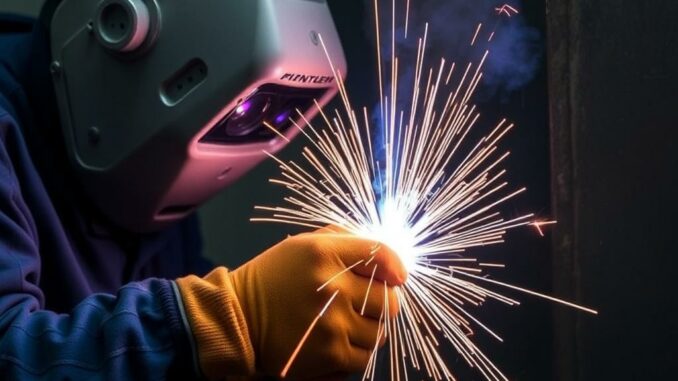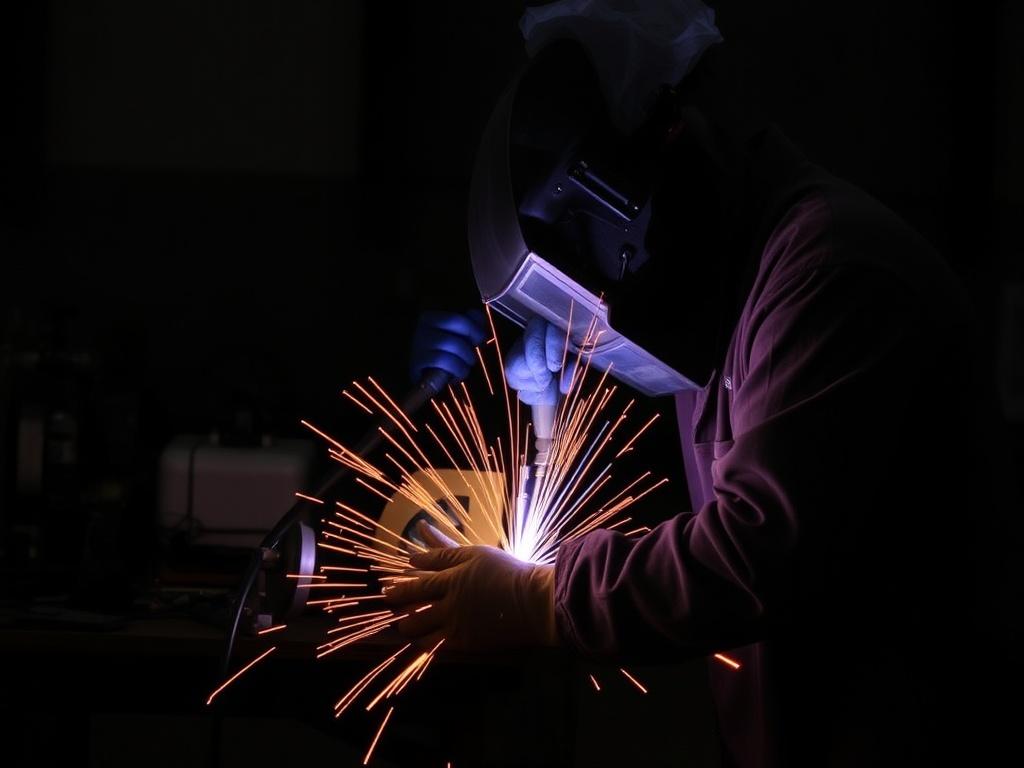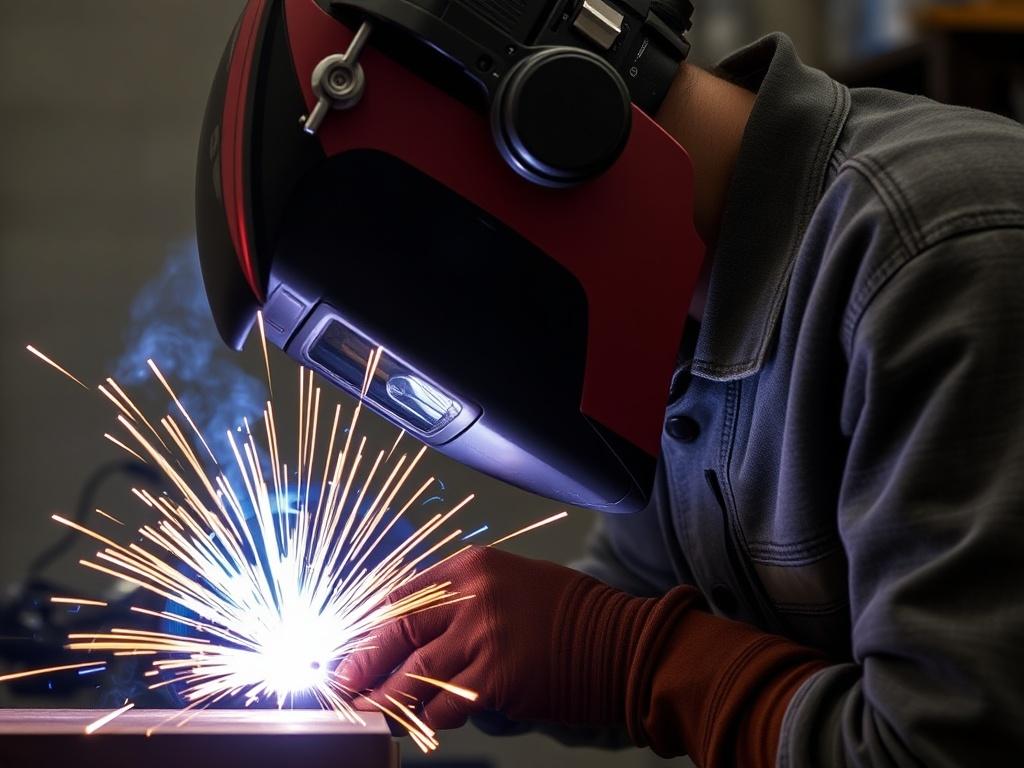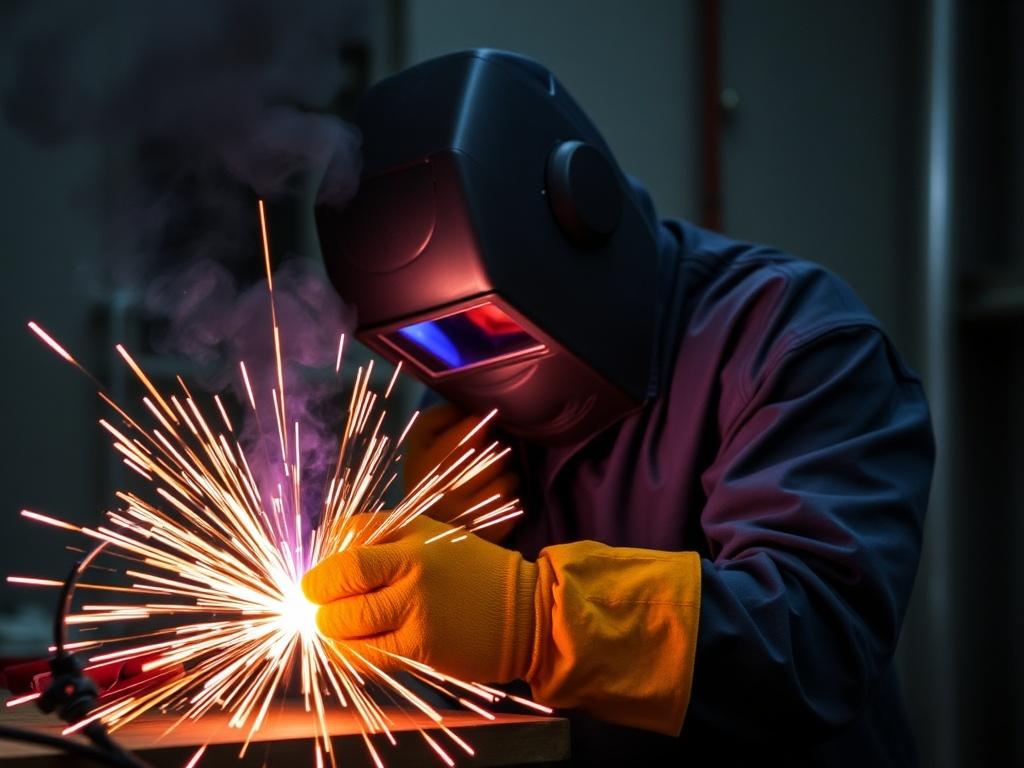
Welding is a fascinating and highly skilled trade that involves joining metals, creating everything from art to essential infrastructure. However, while welding can be incredibly rewarding, it comes with its risks—one of the most serious being electric shock. Understanding these risks and learning how to prevent electric shock is absolutely crucial for anyone involved in welding, whether you’re a hobbyist, apprentice, or experienced professional.
In this comprehensive guide, we’ll explore the various aspects of electric shock risks in welding, delve into how these electric shocks happen, and offer practical and effective prevention tips that can help keep you safe and injury-free. By the end of this article, you’ll have a solid foundation to protect yourself and others in the welding environment.
What Is Electric Shock in Welding?
Electric shock in welding refers to the unintended passage of electric current through the body. Because welding involves the use of electrical equipment, often at high voltages and currents, the risk of accidental electric shock is always present. The severity of these shocks can range from a slight jolt to fatal injuries.
Unlike an electric shock from household appliances, welding shocks can be particularly dangerous due to the nature of the electric circuits involved. Welders might come into contact with the live electrical parts through their hands, feet, or other parts of the body, especially if protective equipment or grounding is lacking.
How Does Electric Shock Occur in Welding?
Electric shocks can happen in welding for a few reasons:
- Contact with live electrical parts: When the welder’s body becomes part of the electrical circuit by touching the electrode or workpiece and the ground simultaneously.
- Faulty equipment or damaged cables: Exposed wires or defective insulation increase shock risks.
- Improper grounding: Failure to properly ground the welding machine or workpiece can lead to dangerous voltage levels.
- Wet or damp conditions: Moisture dramatically increases the conductivity of the body, making shocks more likely.
- Incorrect welding technique: Certain positions and movements may inadvertently place the welder in contact with the electrical supply.
Because of the high currents involved in welding—often thousands of amperes—even a small fault or mistake can result in a serious shock.
The Dangers of Electric Shock in Welding
Electric shock is not just a minor inconvenience; it can cause devastating consequences for welders. The human body’s response to electric current is frighteningly complex, and the results of a shock can vary widely.
Physical Effects of Electric Shock
Electric shock can cause effects such as:
- Muscle spasms or contraction: The electric current can cause involuntary muscle contractions, making it difficult or impossible to let go of the electrode or the source of the shock.
- Burn injuries: High voltage can cause severe burns on the skin and internal tissues.
- Cardiac arrest: Electric current passing through the chest can disrupt the heart’s rhythm, potentially causing ventricular fibrillation, leading to sudden death.
- Respiratory arrest: Shocks may paralyze the respiratory muscles, resulting in breathing difficulties.
- Secondary injuries: Shocks can cause falls or other accidents due to sudden loss of balance or unconsciousness.
The severity of the shock depends largely on the path the current takes through the body, the voltage, duration of contact, and the body’s resistance, which can vary with factors like skin moisture and injury.
Statistics on Welding-Related Electric Shock Incidents
According to various safety organizations worldwide, electric shock remains a leading cause of injury in welding. Although precise numbers differ based on the reporting agency and country, the occupational hazard reports confirm that:
| Statistic | Details |
|---|---|
| Percentage of Welding Accidents Caused by Electric Shock | Approximately 15-20% of welding injuries relate directly to electric shock exposure. |
| Fatalities from Electric Shock | Electric shock accounts for nearly 10% of welding-related fatalities in industrial settings. |
| Common Causes | Poor equipment insulation, lack of personal protective equipment (PPE), and wet conditions feature prominently. |
| Prevention Program Effectiveness | Worksites with proper safety training show up to a 50% reduction in electric shock incidents. |
These statistics highlight how vital it is to take the electric shock risk in welding seriously and prioritize prevention.
Common Sources of Electric Shock in Welding Environments

To effectively prevent electric shock, it’s important to identify where the risk is highest in the welding environment. Electric shock can originate from various elements involved in the welding process, each requiring attention.
Electrical Equipment and Welding Machines
The welding machine is the central source of electrical energy in welding. Faulty or improperly maintained welders can leak current or have exposed wiring. Over time, cables can deteriorate, insulation can wear thin, and connectors can loosen, all increasing the risk of shock.
Additionally, welders connected to power sources with unstable voltage or without proper grounding increase the electric shock risk.
Welding Electrodes and Workpieces
During welding, electrodes and workpieces act as conductors. Touching both the electrode and the workpiece simultaneously with bare hands or wet gloves can complete a dangerous electrical circuit through the body.
Metal Structures and Other Conductive Surfaces
Many structures and surfaces in the welding area are metal and conductive. Improperly isolated or grounded metal surfaces can carry stray currents, posing a hidden shock hazard. Welders leaning against or stepping on wet metal surfaces further increase their risk.
Wet and Damp Conditions
Since water conducts electricity better than dry air, welding in wet weather or damp indoor environments drastically increases shock risk. Sweat accumulation inside gloves and clothes can similarly increase conduction.
Key Risk Factors Contributing to Electric Shock in Welding
Awareness of risk factors helps welders, supervisors, and safety officers mitigate hazards proactively. Below are several critical elements that contribute to electric shock incidents.
1. Lack of Personal Protective Equipment (PPE)
While welding helmets and face shields are widely used, neglecting proper gloves and footwear dramatically increases shock risk. Rubber gloves and insulated boots provide crucial insulation from electrical current.
2. Inadequate Training and Awareness
New welders or those without sufficient safety training may unknowingly put themselves in situations with high electric shock risk. Training enhances hazard recognition and encourages safe practices.
3. Poor Equipment Maintenance
Regular inspection and repair of welding machines, cables, and connectors reduce the likelihood of electrical faults causing shock.
4. Improper Work Practices
Working in awkward positions, holding electrodes incorrectly, or attempting to weld with wet gloves or clothing are common unsafe behaviors.
5. Environmental Conditions
Wet floors, rain, or even high humidity in poorly ventilated areas can heighten the risk substantially.
Practical Prevention Tips to Avoid Electric Shock in Welding

Now that we’ve explored the risks and sources of electric shock in welding, it’s time to focus on prevention. Adopting the right habits and safety measures can save lives and prevent injuries.
1. Always Use Proper Personal Protective Equipment (PPE)
Ensure you wear appropriate insulated gloves designed for welding. Along with these, wear rubber-soled safety boots to prevent grounding yourself through conductive surfaces. Don’t forget dry, flame-resistant clothing to avoid moisture buildup that increases conductivity.
2. Maintain and Inspect Equipment Regularly
Schedule periodic checks on welding machines and cables. Look for any cracks in cable insulation, exposed wires, or loose connectors. Repair or replace damaged components without delay.
3. Ensure Proper Grounding
Ground the welding equipment properly according to manufacturer guidelines. Verify the workpiece and fixtures are grounded to eliminate stray voltages.
4. Keep the Work Area Dry and Clean
Avoid welding in wet environments. If necessary, use waterproof mats or covers to insulate yourself from moisture on the floor or metal surfaces.
5. Use Safe Welding Techniques
- Keep your hands and body clear of contact between the electrode and workpiece.
- Do not hold the electrode with bare hands; always use insulated holders.
- Do not use cables or connectors as makeshift tools or supports.
6. Stay Alert and Focused
Distractions can cause slips and mistakes, so maintain full attention on your task. If fatigued, take breaks to prevent errors that could lead to shocks.
7. Conduct Safety Training
Participate in or organize regular training sessions emphasizing electric shock risks and prevention in welding workplaces.
Top Tools and Equipment to Minimize Electric Shock Risks
Using the right tools designed for safety can go a long way in reducing the risk of electric shock.
| Tool/Equipment | Function | Safety Benefit |
|---|---|---|
| Insulated Welding Gloves | Protect hands from burns and electric current | Prevents conduction of electricity through the hands |
| Rubber-Soled Safety Boots | Protect feet and prevent grounding through wet floors | Breaks electrical circuit path to ground |
| Welding Cable with Proper Insulation | Transmits welding current safely to electrode holder | Reduces risk of shock from exposed or damaged cables |
| Welding Helmet with Face Shield | Protects eyes and face from sparks and electric arc | Indirectly supports shock prevention by encouraging proper handling |
| Ground Clamps and Earth Rods | Establishes a safe grounding path for equipment | Prevents unintended build-up of electrical voltage |
Emergency Response in Case of Electric Shock During Welding
Despite every precaution, accidents can happen. Knowing how to respond if someone experiences electric shock is critical.
Immediate Actions to Take
- Do not touch the person directly if they are still in contact with the electrical source. Touching them can transfer current to you.
- Disconnect the power source immediately. Turn off the welding machine or unplug it.
- Use a non-conductive object like a wooden stick or dry insulated glove to separate the person from the source.
- Call emergency services immediately if the shock was severe or if the person is unconscious.
- Check for breathing and pulse. Provide CPR if trained and necessary.
Important First Aid Tips
After removing the person from the source and ensuring their breathing, observe for burns, shock symptoms, or unconsciousness. Keep the person warm and comfortable until professional medical help arrives.
Summary of Best Practices to Prevent Electric Shock in Welding
To wrap up, here’s a handy checklist summarizing key practices every welder should follow to avoid electric shock:
- Always wear appropriate insulated PPE: gloves, boots, and clothing.
- Inspect and maintain welding equipment regularly.
- Ensure all equipment and workpieces are properly grounded.
- Keep your work area dry and free from conductive clutter.
- Follow correct welding techniques and avoid improper contact between electrode and workpiece.
- Stay alert, well-rested, and trained on electric shock hazards.
- Have emergency procedures in place and know how to administer first aid.
Adhering to these prevention tips not only helps you avoid electric shock risks in welding but also promotes a safer, more productive working environment.
Additional Resources and Safety Standards

For welders seeking to deepen their understanding or implement safety protocols, the following organizations provide excellent resources:
- OSHA (Occupational Safety and Health Administration) – Guidelines on welding safety and electric shock prevention.
- American Welding Society (AWS) – Technical standards and educational materials.
- National Safety Council (NSC) – Workplace safety training and statistics.
- NIOSH (National Institute for Occupational Safety and Health) – Research on occupational risks including welding hazards.
Consulting these resources ensures you remain up-to-date on evolving safety standards and new prevention techniques.
Final Thoughts: Prioritize Safety for a Long and Healthy Welding Career
Electric shock risks in welding are real, significant, and preventable. By understanding the hazards and consistently applying effective prevention tips, welders can safeguard themselves from injury and build their skills with confidence. While it can be tempting to rush through tasks or cut corners, nothing is worth a serious shock or fatal accident.
Take the time to protect yourself and those around you. Incorporate proper PPE, maintain your equipment, stay informed, and practice good habits every time you weld. Your safety is the foundation for every successful weld and every promising project ahead.
Stay safe, work smart, and enjoy the craft of welding for years to come.
